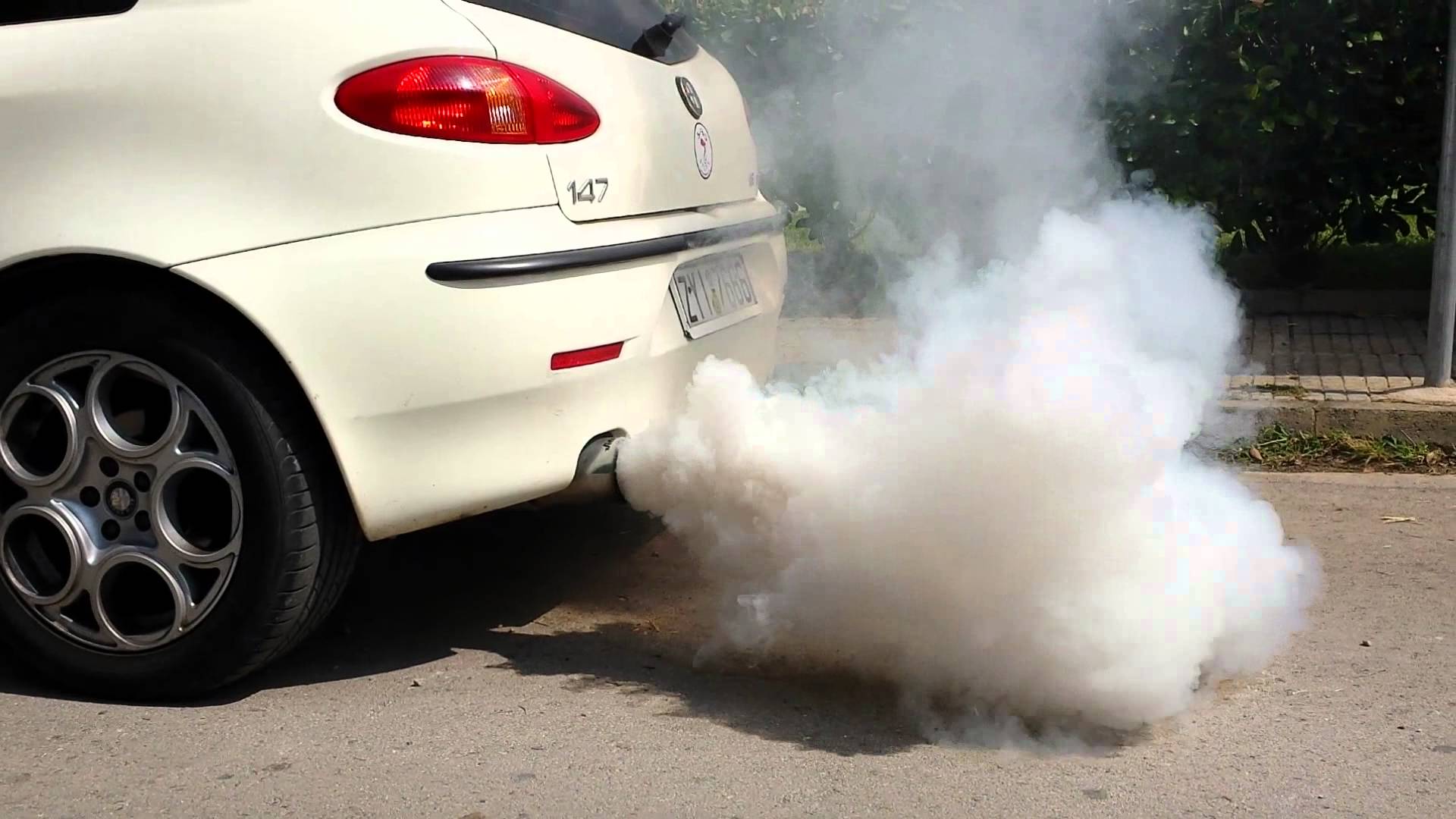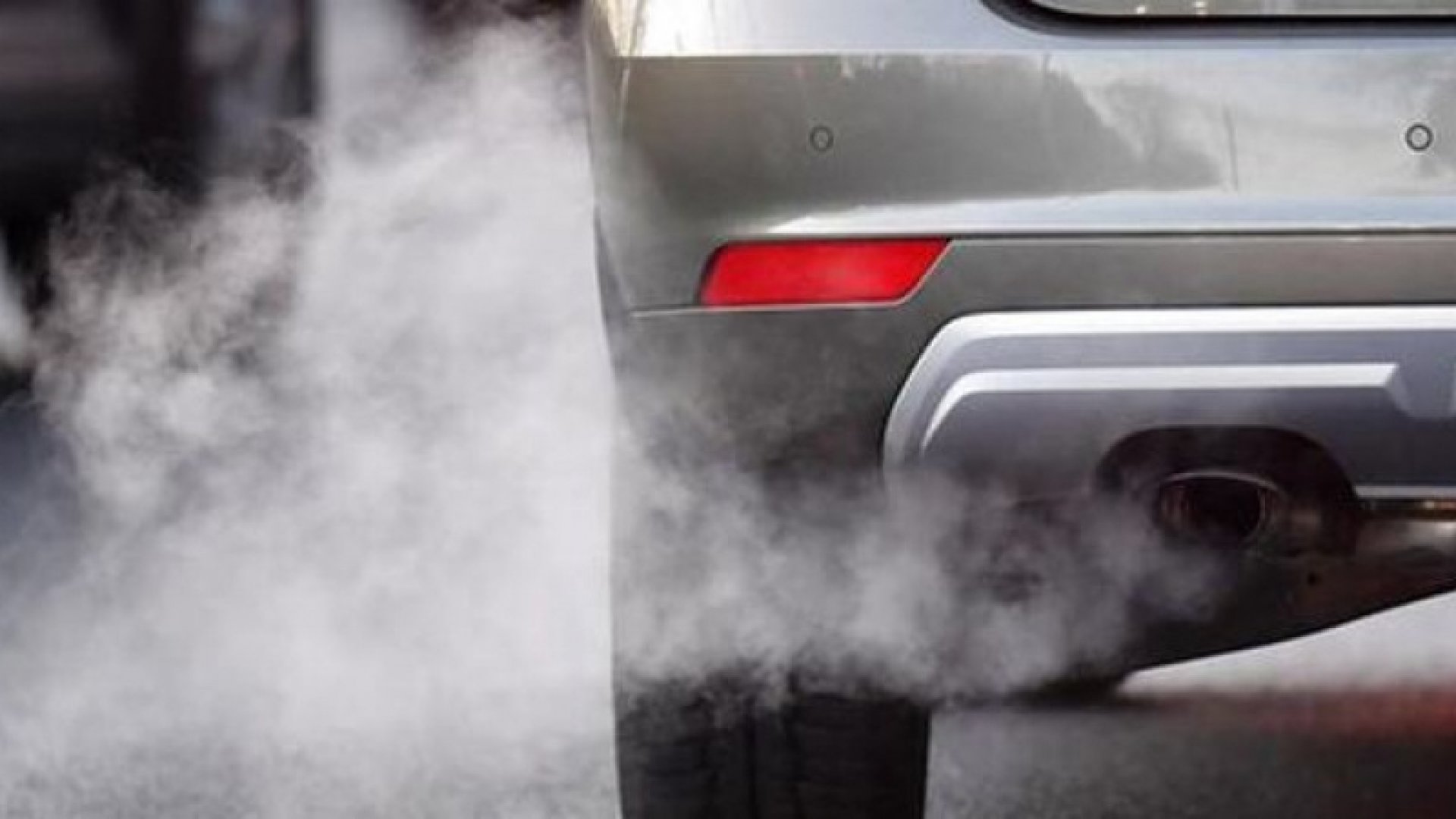
Why smoke from the exhaust pipe of a gasoline engine
Content
Exhaust pipe configuration contributes to noise reduction. If the exhaust gas is formed as a result of a process characteristic of the phenomenon, then at the exit it will be colorless and will not make the motorist worry about malfunctions.
By how much it smokes from the exhaust pipe, you can tell a lot about the work of the internal systems of the car. A strong ejection indicates the development of malfunctions. And a small amount of water vapor in the cold season is a variant of the norm. For experienced drivers, one of the accompanying diagnostic criteria is the color of the smoke. How to determine what is happening inside the engine by external signs - let's look at examples.
What can exhaust smoke tell you?
The exhaust pipe is a mandatory part of the system that forms the internal combustion engine. In fact, this is a silencer that provides a reduction in the noise level associated with the release of gases or air from various devices.
The cylinder of an internal combustion engine in a car releases exhaust gases as a result of the pressure generated inside. This leads to the formation of a powerful noise effect propagating at the speed of a sound wave.

What does muffler smoke mean?
Exhaust pipe configuration contributes to noise reduction. If the exhaust gas is formed as a result of a process characteristic of the phenomenon, then at the exit it will be colorless and will not make the motorist worry about malfunctions.
Problems begin when the system works against the background of the development of violations or the occurrence of defects. In this case, the emission becomes saturated white, blue or brown and black.
Should there be smoke coming from the exhaust?
Smoke from the muffler, according to many motorists, is a variant of the norm. This is true if we are talking about a slight emission of white tint of water vapor. Technically, this phenomenon is observed only at low temperatures, when the machine is poorly heated.
A small cloud may be a sign of increased humidity typical of an exhaust system at -10°C or below. As soon as the system warms up well, the condensate with steam will gradually disappear.
How to determine why smoke is coming from the exhaust pipe of a gasoline engine
In gasoline internal combustion engines, an exhaust system is provided. The muffler is one of the key elements of the system, so the nature and properties of the emission can tell a lot about malfunctions and damage.
The cause of smoke from the exhaust pipe is directly related to the operation of the engine. The following factors can lead to this:
- Violations in the process of fuel combustion.
- Incomplete combustion of fuel.
- The ingress of oils or antifreeze on the cylinders.
By the color of the exhaust gas, an experienced car owner can conduct a superficial diagnosis and conclude where to look for a malfunction.
Varieties of smoke from the exhaust pipe of a gasoline engine
If it smokes heavily from the exhaust pipe, then, first of all, you need to pay attention to the shade of the emission. This will tell you a lot about the nature of the problem.
white steam
Emission of white translucent vapor from the muffler at an air temperature below -10 °C is normal. Condensation accumulates in the exhaust system, so when the engine warms up in cold weather, an intensive release of water vapor begins. An external examination will help you confirm the norm. After the engine warms up, water droplets usually remain on the cut of the exhaust pipe.
The smoke from the exhaust pipe of a gasoline engine of an intense white hue can be alert when it is warm outside.
Smoke on cold
Starting a cold engine is one of the problems of motorists. While the car is standing outside at low air temperatures, it experiences certain loads. If it is not periodically warmed up, then important elements of the system begin to freeze slightly.
The appearance of thick smoke during a cold start may indicate the presence of minor malfunctions:
- Frozen oil seals.
- Retraction of piston rings.
- The appearance of malfunctions in the sensor system.
- The use of low-quality gasoline with impurities.

How to identify a malfunction by color
If you have a fairly worn out used engine, then the reason may be in the engine oil. The degree of viscosity of the composition affects the work. Liquids flow into the gaps before the engine has time to warm up.
Blue (gray) smoke
If there is a lot of smoke from the exhaust pipe, but the smoke is white, then this may be a variant of normal operation. When a bluish, bluish or deep blue hue appears, it becomes clear that undesirable processes are taking place inside the machine.
Blue or gray smoke is also called "oily". Obviously, such a release is caused by engine oil getting on the cylinders or pistons.
The reasons for this may be several:
- Cylinder or piston wear.
- Worn rotor bearings or seals.
Another common case concerns ignition failure and valve leaks. Then one of the cylinders is turned off, the valve gets burnt out - the smoke becomes blue and white. Determining a cylinder defect is quite simple. Inside the part, the compression is insignificant, the accompanying candle is covered with black soot.
Black smoke
After the formation of black smoke, soot particles fly out of the muffler. This is a sure sign of a malfunction in the fuel supply system. To this problem, as a rule, accompanying difficulties are added:
- The motor does not always start, it is unstable, it may stall.
- During the use of the machine, gasoline consumption increases significantly.
- Power is lost inside the engine.
- Exhaust gas has a strong unpleasant smell.
The cause of such phenomena may be leakage of nozzles - then a major overhaul of the motor is necessary. If these parts fail, fuel will leak into the engine even when you are not driving. The result is a re-enrichment of the fuel-air mixture. The described phenomenon leads to an increase in friction between parts - this increases the risk of premature wear.
One of the dangerous varieties is black-gray smoke, there may be several reasons for its appearance:
- Nozzle wear.
- Violation of the gasoline supply control system.
- Clogged air filter.
- Poor throttle performance.
- Decrease in the quality of the gaps inside the intake valves.
- Turbocharger malfunction.
- Incorrect labeling of heat supply or gas distribution.
What should the exhaust color be?
A change in the color of the exhaust from the muffler indicates changes in the operation of the engine. Timely response to malfunctions will help to avoid serious problems with the machine.
When burning oil
When they talk about excessive consumption of oil, then, first of all, they mean such a quality as viscosity. Too thick oil provokes wear, the liquid composition flows inside when the engine is at rest.

What does muffler smoke say?
If your car eats a lot of oil, then the color of the smoke from the muffler will tell about it: at first it is gray, quickly disappearing. Such a phenomenon may go unnoticed for a novice car owner.
With a rich mixture
An over-rich air/fuel mixture inside the distribution system will result in a black emission from the muffler. This means that the fuel that gets inside does not have time to burn. The problem requires an immediate solution, otherwise you risk being left without a car.
After oil change
Oily or gray smoke indicates the use of low-quality raw materials or the constant flow of oil into the engine.
If we are talking about poor viscosity of the composition, then a complete replacement can help. After that, blue smoke may appear from the exhaust pipe for a short time at the first start. Then disappears, changes to white or translucent.
After stopping the engine
It seems that after the engine stops, all processes automatically stop. But it is not so.
There are 2 standard options:
- Whitish smoke. Serves as one of the signs of the release of condensate vapor.
- Black smoke in a thin stream. The indicator of the afterburning process in the catalyst.
After a long break
In this case, the cause is easy to find. If you have not used the machine for a long time, then the first start will lead to the removal of smoke from the pipe. If the emission thins out and then disappears as the engine warms up, then there is no problem.

Why does the muffler smoke
If even when the engine warms up, the smoke does not stop, then it becomes thicker, then this indicates the sinking of the oil scraper rings.
After removing the catalyst
When you remove the catalytic converter, you kind of break the sequence of actions within the system. Electronic sensors do not count the element, so they start throwing more gasoline. There is a re-enrichment of the fuel mixture - black smoke oozes from the muffler. This problem can be solved by resetting the settings or reflashing the electronics.
Under load
The load for the car can be considered pressing the gas pedal to failure, provided that the car is standing still. The second option is a long and difficult climb up the mountain. Both cases assume that the muffler will produce white smoke. These are variants of the norm.
The causes of smoke from the exhaust pipe of a gasoline engine can be serious malfunctions. This is especially true of the appearance of the so-called "colored" exhaust. Normally, white steam is acceptable, indicating the presence of condensate. Gray, black or thick and dense exhaust - a signal that the parts are worn out, it's time to change them.

